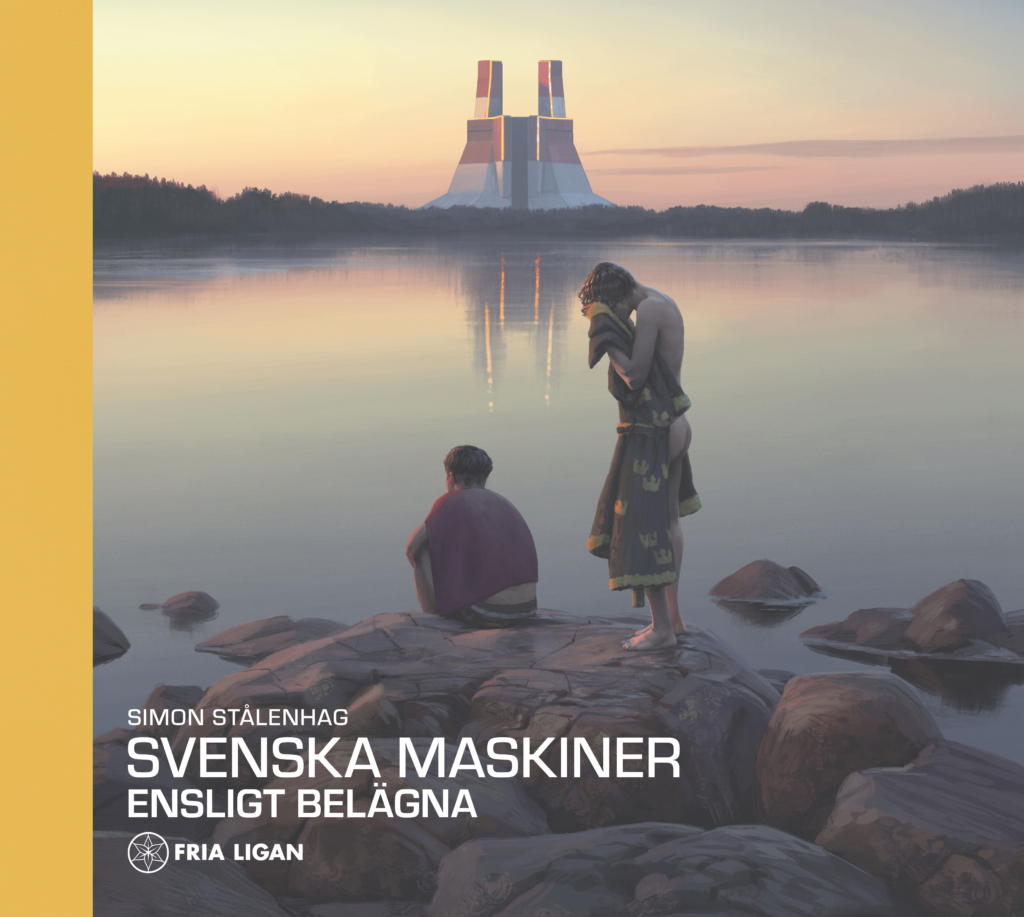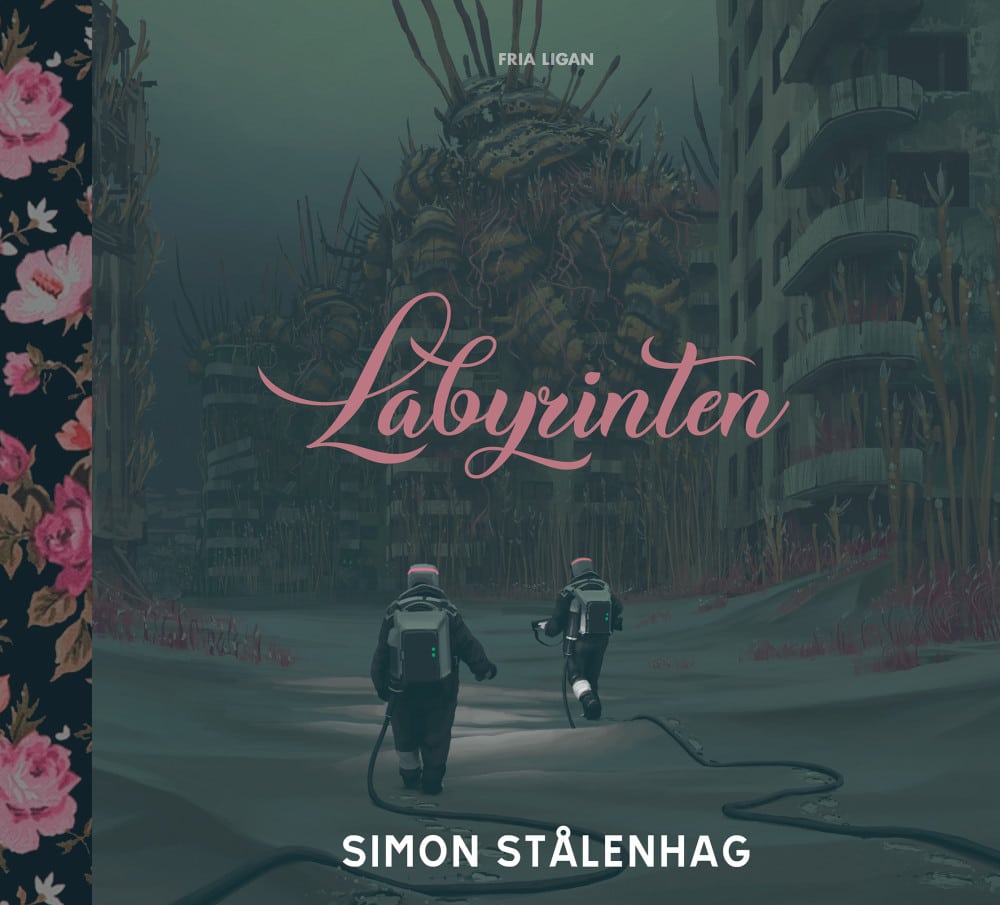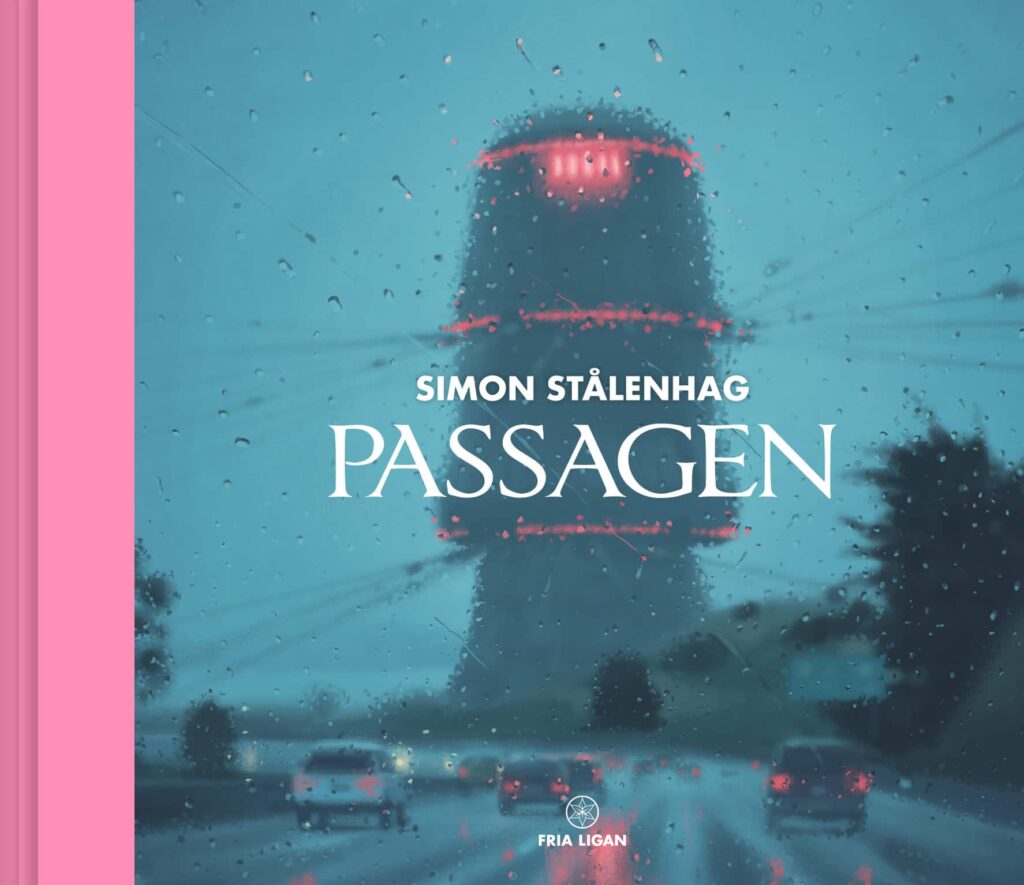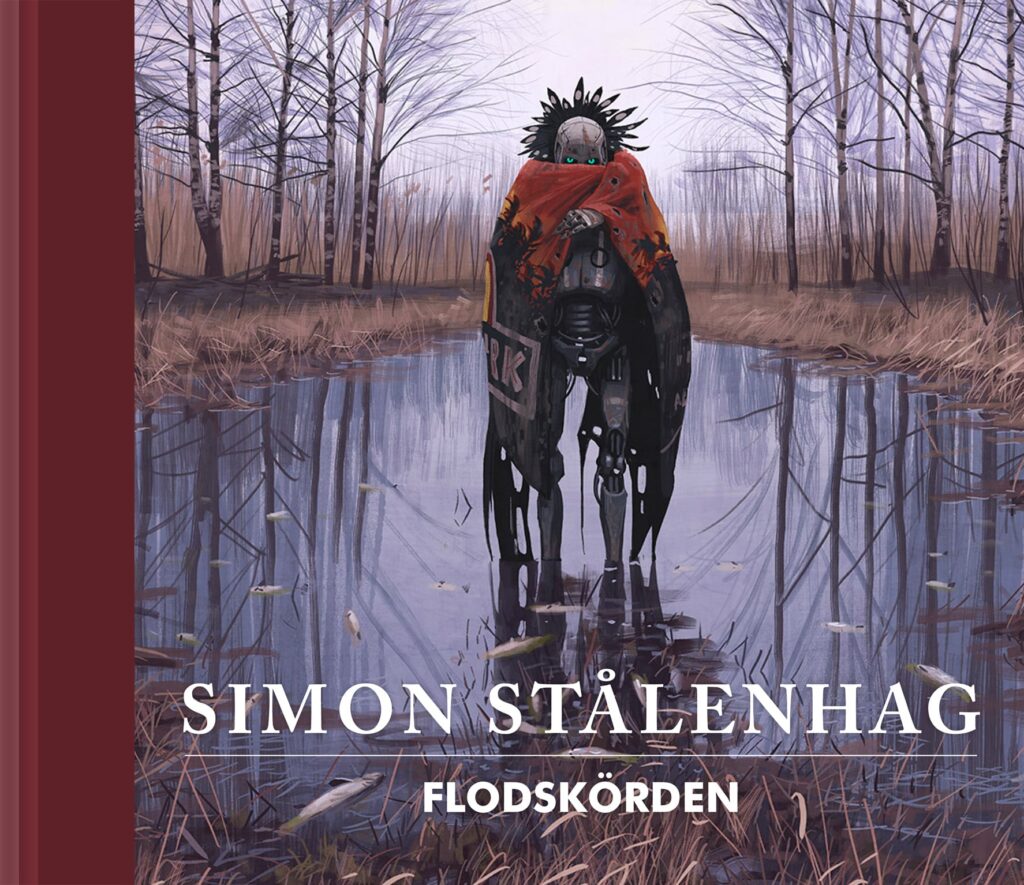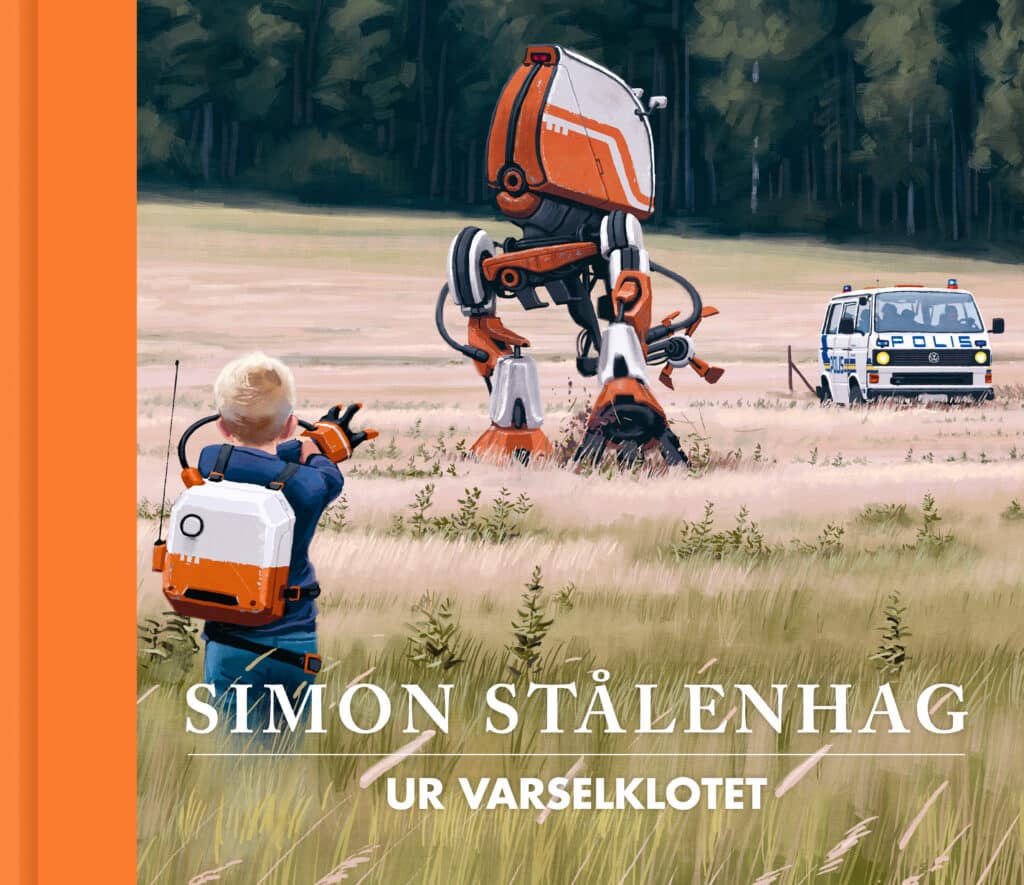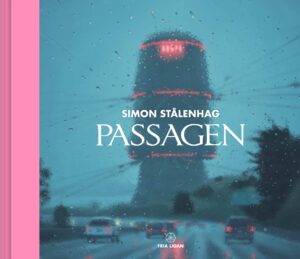
Passagen The Electric State
In late 1997, a runaway teenager and her yellow toy robot travel west through a strange USA, where the ruins of gigantic battle drones litter the countryside along with the discarded trash of a high tech consumerist society in decline. As their car nears the edge of the continent, the world outside the window seems to unravel at an ever faster pace, as if somewhere beyond the horizon, the hollow core of civilization has finally caved in.
Simon Stålenhag is the internationally lauded artist and author of Tales from the Loop and Things from the Flood. Now, Stålenhag turns his unique vision to America in a new narrative art book: The Electric State.
Now a major motion picture adaptation on Netflix directed by The Russo brothers, starring Millie Bobby Brown and Chris Pratt.
Awards
| Shortlisted for the Arthur C. Clarke Award UK | 2019 |
| Shortlisted for a Locus Award (Art Book) US | 2019 |
Reviews
-
“Stålenhag’s images are digital and realistic, but feel warm like oil-paintings. They are vivid yet unreal. They have a sense of nostalgia, but at the same time, cold alienation. /…/ The images have a powerful, almost physical, effect on me. They evoke something; I can feel them on my skin. Looking at them, one comprehends things about the world they depict, in a wordless way.”
-
“Simon Stålenhag tells a modern epos in images and words. /…/ With delicacy and empathy, he depicts a young person through her own words, thoughts and story. /…/ His hand and voice form a whole that is unique. /…/ Stålenhag’s three books take place before, during, and after a hinted-at catastrophe. Tales from the Loop brings to mind subsequent works such as Stranger Things, but The Electric State is more reminiscent of the mood in The Walking Dead. And the genre certainly evokes a creeping sense of horror: the text contains closely portrayed frightening depictions of physical and mental decay and suffering, and the images are dominated by threatening, monstrous constructions in the distance and over-dimensioned, dissonant robot creatures. A feeling of being watched and an ever-present uneasiness, a feeling of threat, infuse the images. But it is the story in pictures and words, the symbiotic relationship between the two, that captivates the reader from start till finish. Be sure not to miss the part of the plot that only plays out in the images, either, inserted into a narrative by a foreign voice recalling memories about the world and the war. /…/ Stålenhag is a master of the art of telling a story in fragments. Piece by piece, the world, the plot and the protagonist emerge from the short texts that accompany the artworks. A lonely girl who plays a bigger role than she knows, on her way through an unforgiving wasteland. In this manner, The Electric State becomes a classic epos, but at the same time also a bildungsroman told in retrospect.”
-
“His art deserves the entire world’s appreciation. /…/ The depictions of people’s utter need for artificial satisfaction recall the last days of the Roman empire as well as Huysmans’ À rebour.”
-
“Simon Stålenhag’s The Electric State is an intimate dystopia where the most beautiful imagery is found in the prose. /…/ Simon Stålenhag knows the art of prolonging the suspense and building a solid story. On top of this he manages to stir the emotions of the reader in just a few sentences, scenes from Michelle’s childhood singe. /…/ It is so beautifully written, with such luster, that the past sometimes seems more real than the grim present. /…/ In the end, it is in the small things that Stålenhag impresses the most. In what affects rather than stirs philosophical thought. The majority of the imagery I take with me after reading the book isn’t drawn, but hidden in the prose.”
-
“A jaw-dropping science fiction artbook /…/ This quiet, sad adventure is an excellent and visually stunning addition to any graphic novel, art, or science fiction collection.”
-
“[A] haunting illustrated novel. /…/ Readers of bleak, emotionally rich dystopian science fiction will be fascinated with the way Stålenhag doles out details—all the way to the open-ended, heartbreaking conclusion.”
-
“An awe-inspiring vision of a species committing suicide, perhaps to be reborn as something new. […] The Electric State is a striking and strangely compelling work of science fiction gothic. Providing a series of snapshots of an alternate Earth of yesteryear, it tells the story of how that world ended.”
-
“Most of the time, when I read a Simon Stålenhag book, I spend days scanning the trees around my house, looking for a shudder in the leaves; for the hump of a giant robot rising over the treeline, just beginning to stand. /…/ The stories crawl into my brain and mess with my memory of history, time and place. His art (photorealistic, washed out, laced in neon or icicles, nostalgic and futuristic both at the same time) gets into my eyes and stays there. /…/ Where Tales and Things had an innocence to them — a sense of wildness and freedom in their structure as visual memoirs of a kid growing up in the shadow of a looming, strange future full of inexplicable machines and utopian science gone wrong — State does not. His Swedish books read joyous when they were happy, bittersweet (but rarely sorrowful) when they were not, and adventurous in between. But The Electric State is Stålenhag’s American book. His vision of an alternate post-war, post-drought, post-human 1997 in the desert West and California. And it is haunting. /…/ Stålenhag’s art has always been jarring, with its combination of dull suburban tract houses, Brutalist apartment blocks, boxy economy cars and the sleek lines of pure sci-fi machinery. He’s always done decay well, and abandonment. He’s always had a hacker’s eye for kludging together old technology and new amid a rat’s nest of cables and blinky lights. He’s got a knack for the slick sheen of biopunk grossness — all tendrils and weird fluids — and the consequent juxtaposition of humans and the machines they have made. But State is a departure in that here — in his America, in his version of our particular sick and sweaty dream of the future — the man and the machine are one. /…/ Like snapshots from a horrifying past that never quite was. And if you’re anything like me, you’ll take those images to bed with you for a long time and dream of Stålenhag’s America — lost to sand, to drought, to war, to loneliness, and stalked always by the low, distant rumble of something terrible rising out of the earth and coming for you.”
-
“Superb /…/ How many times in your life are you going to genuinely blurt out “what the hell is that?” /…/ instances of authentic amazement are so rare that they may soon go extinct. Which is why Swedish artist Simon Stalenhag’s new “narrative art” book The Electric State will be getting your attention whether you like it or not /…/ spellbinding /…/ If you detect a possible allegory here to our gradual enslavement to digital media, you may be onto something.”
-
“[The Electric State] is dystopian ‘90s at its most bleak. It’s the gloom of Twin Peaks and the detached alienation of Nirvana’s Nevermind with a plot that reads like The X Files meets The Lawnmower Man.”
-
“The Electric State is a fascinating work, an illustrated novel in which the art carries the burden of the narrative. /…/ The Electric State is a chilling, unforgettable visual and narrative experience.”
-
“[The Electric State] is simultaneously the most beautiful and frightening thing imaginable – not an everyday combination, but then Simon Stålenhag’s The Electric State is also not an everyday work.”
- Author
-
 Simon Stålenhag
Simon Stålenhag
- Published
- 2017
- Genre
-
- Art & literary
- Pages
- 144
- Reading material
-
Swedish edition
English edition
- Rights sold
-
Brazil, Companhia das Letras
China, Guomai (Simplified Chinese)
Czech Republic, Argo
Denmark, Alvilda
Finland, Johnny Kniga
France, Editions Akileos
Germany, Fischer
Hungary, Agave
Italy, Mondadori
Japan, Graphic-sha
Korea, Minumsa
Poland, Zysk
Portugal, Asa
Russia, Eksmo
Slovakia, Albatros
Spain, Roca
Sweden, Fria Ligan
Taiwan, Chi Ming (Complex Chinese)
Thailand, Earnest Publishing
The Netherlands, Lebowski
Türkiye, Ithaki
UK, Simon & Schuster
Ukraine, Vydavnytstvo
US, Atria / Skybound Books
- Film rights sold
-
US, AGBO
